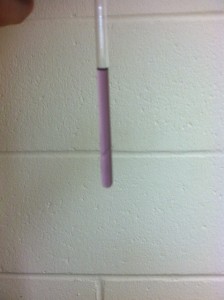Concentration
13C signal strength is only 1/6000 of 1H. For 1H experiments, any reasonable concentration will give you sufficient signal, but for 13C, usually the higher the concentration, the better. Our 400MHz and 500MHz instruments are equipped with Prodigy® cryoprobes which boost 13C signal-to-noise ratio significantly.
Signal strength is proportional to the molar concentration of your sample. Generally, if you have ~ 10 mM, you should be able to obtain a decent 13C spectrum within half an hour.
How to run 13C faster and obtain quantitative result
See these entries:
Some Useful Commands
- go: Similar to zg, except that the new data will not overwrite the existing data, but add on to the existing data. This is helpful when you have finished a run but feel your existing data does not have sufficient signal-to-noise ratio and you wish to add more scans.
- lb: line broadening parameter. its unit is Hz. Change lb, then do efp, and you will vary the resolution and signal-to-noise ratio of the spectrum. The default lb is 0.3-1 Hz. Larger lb suppresses noise but broadens the peaks. Properly tuning lb value is very helpful when your sample peaks are naturally broad.
- tr: transfer the data acquired so far to your file, so that you can examine the preliminary spectrum when the acquisition is still running in the background. This is helpful when you setup a long experiment. Do tr after 20-30 scans, and look at the data. If you see nothing (not even the solvent peak), something is wrong. You want to find the problem early on so that you don’t waste a whole night’s time.
Variations of 13C experiments
DEPT gives you stronger signal than regular 13C, but will not show signals from non-protonated carbons.
Although HMQC is a 2D experiment, it is at least as quick as regular 13C (likely quicker). It also tells you which carbon is bonded to which proton.
HSQC is very similar to HMQC but has higher resolution and CH2 show up as negative peaks (like that in DEPT135), which further helps your signal assignment.
